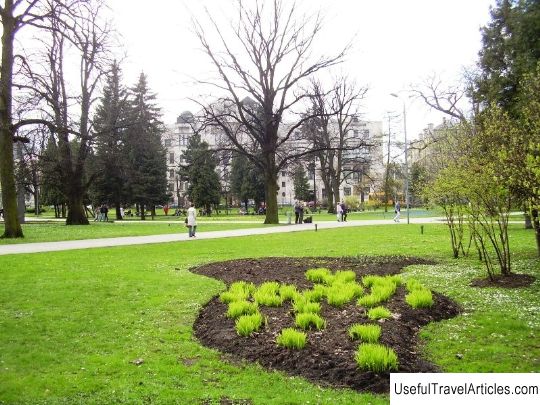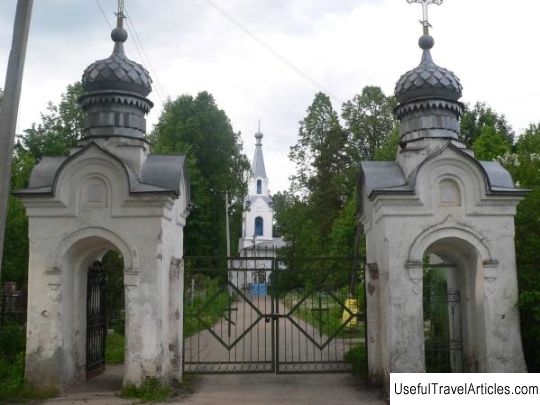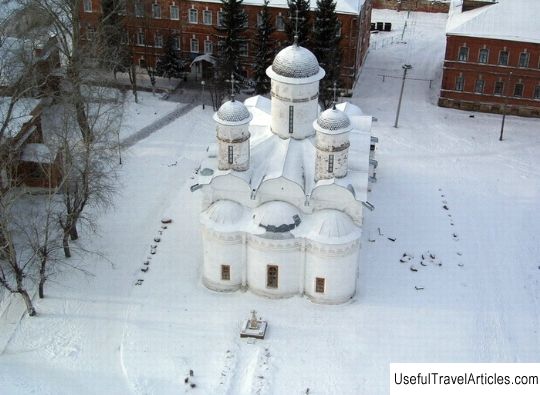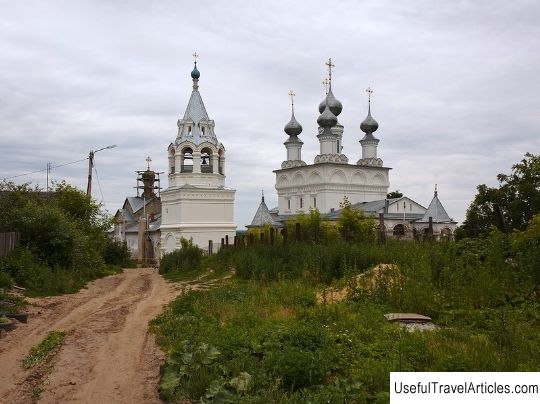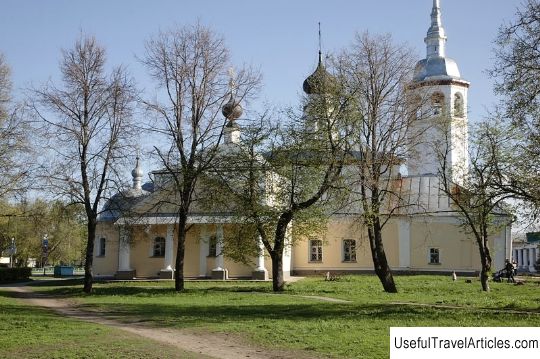Lazarevskaya and Antipievskaya churches description and photos - Russia - Golden Ring: Suzdal
Rating: 9,0/10 (1993 votes) 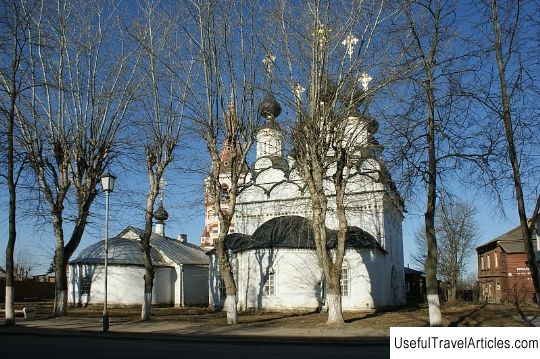
Lazarevskaya and Antipievskaya churches description and photos - Russia - Golden Ring: Suzdal. Detailed information about the attraction. Description, photos and a map showing the nearest significant objects. Photo and descriptionIn the city of Suzdal, on the territory of the Market Square, namely near the Monastery of the Robe, there are two famous churches: Lazarevskaya and Antipievskaya. Lazarevskaya church or the temple of Lazarus the Righteous The Resurrection is a five-domed church, which is the earliest Orthodox building in the entire city settlement. The church was built in 1667, and some time later, the Antipievskaya winter church was erected next to it. The Lazarevsky temple was built on the site of a previously existing wooden church, built in the 15th century. The earliest mentions of the church date back to 1495, when it was written about it in a letter received from Ivan the Third by the Savior-Euthymius Monastery. In the inventory of the city of Suzdal there are records that tell about that in 1667 the wooden church was replaced by a stone one with the financial support of the townspeople. The main volume is represented by a quadrangle, skillfully decorated with platbands, a wide cornice equipped with a tiled belt and horseshoe-shaped kokoshniks. Three apses are attached to the building from the east. The decoration of the light drums is made in the form of an arcature-columnar belt, all corners of which are exposed on kokoshniks, presented in the form of horseshoes. An important difference between the Lazarevskaya church and other Suzdal temples is that the corner temple is not blind, but has window openings, which indicates a rarely used building structure. In the inner part of the building there are two large pillars serving as a support for the corrugated vaults, which form light holes near the corners of the drum and at its center. It is important to note that it was the Lazarevsky temple that became the ancestor of the tradition of the so-called "sacred five-domed" - in this matter Patriarch Nikon played an important role, who considered that it was this completion of the temple that was proper for churches, and not a simple tent-roof covering. In 1745, a winter Antipievskaya church was built at the temple of Righteous Lazarus, with the appearance of which a pair tandem of churches was formed. It is located literally "two steps away" from the Lazarevsky temple. At first, the church was located on the site of the Sretensky wooden church, but later the temple of the Hieromartyr Antipas, who lived in the time of Nero, was built here. Saint Antipos became famous for an incredible feat - he refused to worship pagan deities, for which reason he died a terrible martyr's death - he was thrown into a red-hot furnace at the temple of Artemis, in which sacrifices were most often made to idols. After that Antip was numbered among the saints. The Antipievskaya Church, like most of the winter churches in the city of Suzdal, is not so large, laconic in design, and also modestly decorated. It is a rather low rectangle elongated to the eastern part, the overlap of which is made in the form of a gable roof; the wedding is done as a single dome, placed on a thin drum. On the east side, the main volume includes an apse made in the form of a semicircle; a bell tower is located on the west side, which is one of the highest buildings in Suzdal. It is because of the presence of such a majestic bell tower that the ensemble of the Lazarevskaya and Antipievskaya churches is one of the most recognizable in the entire city. In the plan of the Antipievskaya belfry, an octagon is exposed on the quadrangle, which ends with a somewhat concave tent, equipped with several rows of rounded dormer window openings. The bell tower facades are decorated with rustic colored pillars, as well as graceful flies. At the beginning of 1959, large-scale restoration work was carried out concerning the entire ensemble as a whole. A.D. was appointed responsible for all activities. Varganov. Based on the results of the restoration and repair work, the outer coloring of the bell tower was redone in accordance with the preferences of the townspeople of the 17th century.         We also recommend reading Palazzo Ca 'Foscari description and photos - Italy: Venice Topic: Lazarevskaya and Antipievskaya churches description and photos - Russia - Golden Ring: Suzdal. |
